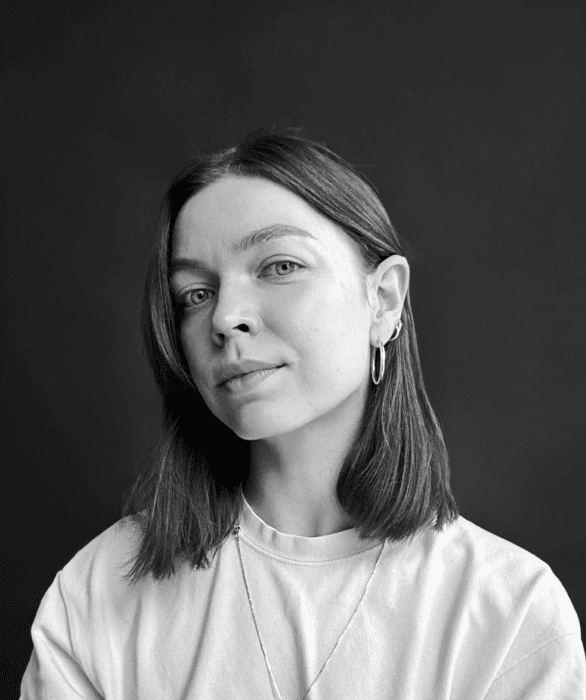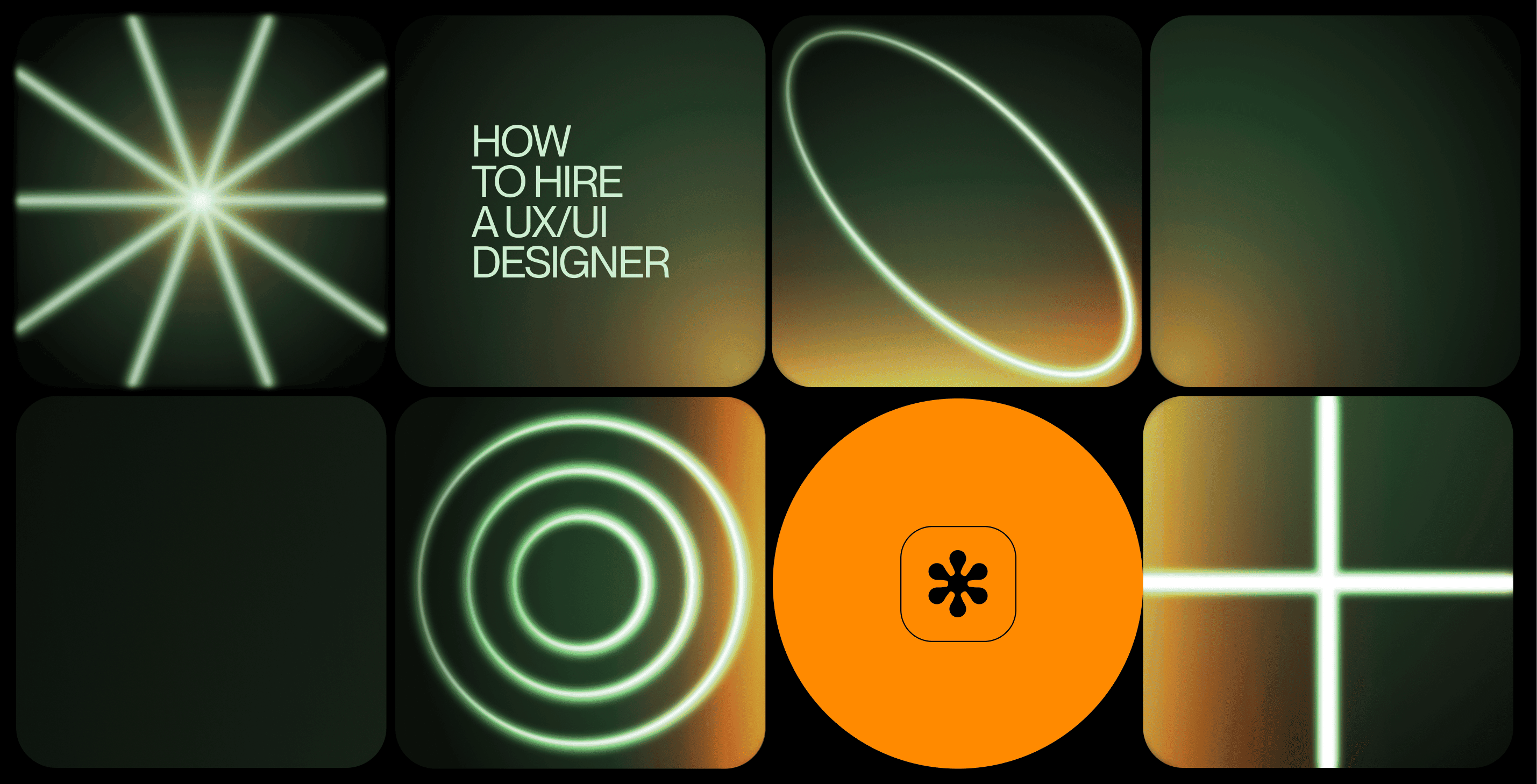Outline:
In 2025, the need for proficient UX/UI designers offering top-notch UX/UI design services is more pronounced than ever. Companies are increasingly focusing on crafting engaging, user-friendly, and aesthetically appealing digital experiences.
We’ve created the 2025 guide for recruiting UX/UI designers, designed to help businesses, HR professionals, and team leaders navigate the complexities of hiring top design talent. This comprehensive guide delves into the roles of UX/UI designers, the distinction between UX and UI, the skills of product and graphic designers, and the emerging trend of developer-designer hybrids. It also explores different hiring models, including in-house teams, freelancers, and design agencies.
Our guide focuses on the benefits of hiring the ideal designer, offering strategies for evaluating portfolios and skills, writing effective job descriptions, using various recruitment platforms, and conducting productive interviews. It also tackles common hiring challenges and advises on creating a customized interview process to fit your company’s culture and needs.
That’s why it serves as an indispensable roadmap for building or enhancing a design team, ensuring the inclusion of designers who are not only technically skilled but also culturally aligned with your organization’s vision.
Also See: What’s the Difference between UX vs UI Design
The Role and Responsibilities of UX/UI Designers
In the digital world, to ensure that users have a seamless and enjoyable interaction with digital products, the work of UX and UI designers are pivotal. Although their roles often overlap, they each carry distinct responsibilities, shaping products to be visually appealing and functional at the same time.
UX Designers
A lot of companies are looking for an experienced UX designer for hire, as they are primarily focused on understanding user needs, behaviors, and motivations. They engage in user research and analyze feedback to steer the design process. Creating user personas and scenarios is a key part of their role, enabling them to tailor designs to meet specific user groups’ needs. They are responsible for wireframing and prototyping, generating early representations of the product to visualize layout and functionalities.
Usability testing is a crucial aspect, where UX designers test various elements of the user experience to identify potential issues or improvement areas. They also design the product’s interaction aspect, aiming to make the user’s interaction as simple and efficient as possible. Collaboration is a significant part of their job, working closely with UI designers, developers, and product managers to align the product with business goals and technical constraints.
UI Designers
Many businesses strive to hire user interface designers who professionally specialize in the visual aspects of a product, such as layout, colors, typography, and iconography, making the product visually engaging and adjusting with brand standards. They are tasked with creating responsive designs that adapt to various screen sizes and devices, providing a consistent user experience. Implementing and maintaining design systems, which are sets of standards and components that bring a cohesive look and feel, is also part of their role.
It is vital to hire UI designers who will make all interactive elements like buttons, sliders, and controls aesthetic. They work in tandem with UX designers to make the visual design complement and enhance the overall user experience.
Combined Role of UX and UI Designers
In many companies, especially smaller ones, the roles of UX and UI designers are interconnected. Professionals in these roles are expected to have a comprehensive skill set covering both the analytical, research-focused aspects of UX design and the creative, visual aspects of UI design. Their responsibilities span the entire gamut of designing a user-friendly and aesthetically appealing digital product, from initial research and design to final implementation and testing.
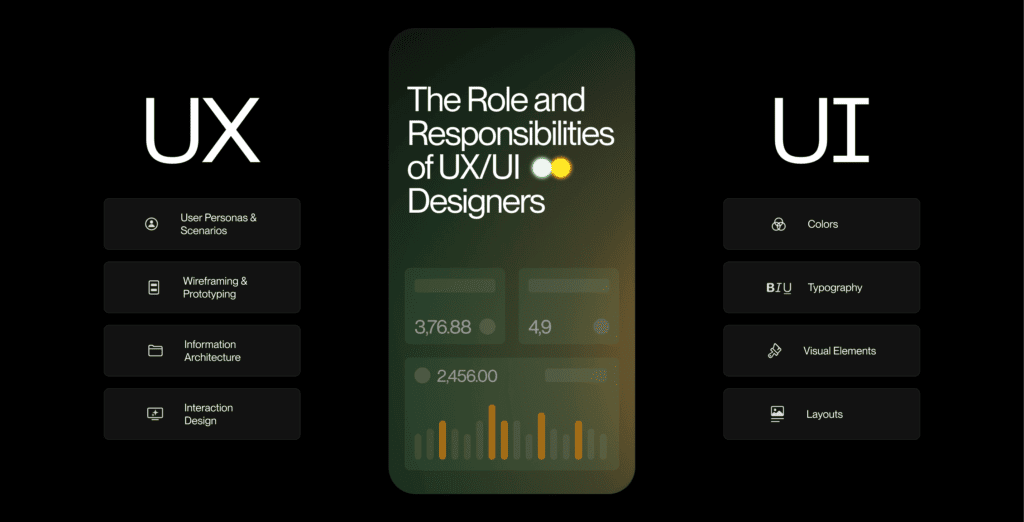
Why to Hire a UI/UX Developer
As businesses increasingly move online and the digital landscape becomes more competitive, the role of a UI/UX designer becomes crucial in differentiating products and enhancing user satisfaction. Here’s an exploration of why to hire a UI/UX designer is vital for any business aiming to thrive in the digital arena.
Enhancing User Experience and Engagement
A UI/UX designer is instrumental in creating an intuitive and engaging user experience. They ensure that users find value in what you are providing, whether it’s a website, app, or software. A well-designed user interface can lead to increased user engagement, higher retention rates, and ultimately, greater conversion rates.
UI/UX designers focus on understanding user needs and behaviors, ensuring that the product meets these requirements, thus fostering a positive relationship between the user and the product.
Driving Brand Perception and Loyalty
The design of your digital product significantly influences how your brand is perceived. A UI/UX designer helps create a cohesive look that aligns with your brand identity, making it more recognizable and memorable. By providing a consistent and enjoyable user experience, they play a key role in building trust and loyalty among your user base, which is essential for brand growth and reputation.
Streamlining Product Development
UI/UX designers bring a user-centered perspective on the product development process. By prioritizing user needs and feedback, they help in identifying potential issues early in the development cycle, saving time and resources that might otherwise be spent on reworking the product post-launch.
Their involvement ensures that the product is developed with a clear understanding of its intended use, reducing the likelihood of costly redesigns and feature adjustments later on.
Boosting Competitive Advantage
In an environment where users have numerous options, a well-designed product can be a significant differentiator. UI/UX designers make your product stand out by creating unique and compelling design elements and user experiences. This not only attracts users but also provides a competitive edge in the market.
Facilitating Accessibility and Inclusivity
A skilled UI/UX designer is also mindful of accessibility and inclusivity in design. They ensure that digital products are accessible to all users, including those with disabilities, thereby expanding the product’s reach and inclusivity. This is not just a moral imperative but also broadens the market base and complies with legal standards in many regions.
Enhancing Efficiency and Productivity
For applications and software used internally within organizations, good UI/UX design can significantly enhance efficiency and productivity. Employees can perform tasks more quickly and with fewer errors when interfaces are intuitive and user-friendly, ultimately benefiting the overall workflow and business operations.
Contributing to Business Growth
Ultimately, the work of a UI/UX designer directly contributes to the growth of the business. By improving the user experience, enhancing brand loyalty, and ensuring the product is competitive and accessible, they play a pivotal role in attracting and retaining customers.
In the digital marketplace, where user experience is often the deciding factor in choosing one product over another, the role of the UI/UX designer becomes a critical component in the success and growth of the business.
All in all, employing a UI/UX designer is essential for any business seeking to create impactful, user-friendly, and successful digital products. Their expertise not only enhances the user experience but also drives business success by aligning the product with user needs and market demands.
The Role of a Product Designer
The role of a product designer intersects significantly with that of a UI/UX designer, as both are essential in shaping how users interact with digital products. While UI/UX designers focus specifically on the usability and aesthetic aspects of the user interface and experience, product designers encompass these elements within the broader context of the product’s entire lifecycle and strategy. They ensure that the product not only meets the functional needs of the user but also delivers a cohesive and engaging experience.
Comprehensive Design Responsibility
A product designer’s responsibility spans the entire lifecycle of a product. From initial concept and ideation to design implementation and iteration, they oversee the product’s development at every stage. This holistic approach requires a blend of creativity, technical knowledge, and user-centered thinking.
Balancing User Needs with Business Goals
One of the primary tasks of a product designer is to balance user needs with the business goals of the product. They must understand the business objectives behind the product and align their design strategies accordingly. This involves conducting market research, understanding user behaviors, and identifying pain points to ensure that the product addresses both user requirements and business targets effectively.
User-Centered Design Approach
At the core of a product designer’s role is a user-centered design approach. They focus on creating products that are intuitive, accessible, and provide a seamless experience for the user. This involves understanding the user’s journey, anticipating their needs, and designing solutions that enhance their interaction with the product.
Prototyping and Testing
Product designers are extensively involved in creating prototypes and conducting testing cycles. Prototyping allows them to visualize and test various design concepts, while iterative testing helps refine the product based on user feedback. This process is crucial in identifying usability issues and ensuring that the final product is user-friendly and meets the expected quality standards.
Cross-functional Collaboration
In their role, product designers collaborate with various teams, including engineering, marketing, and sales, to ensure that the product is feasible from a technical standpoint and aligns with marketing and sales strategies. This cross-functional collaboration is essential for the successful launch and sustainability of the product in the market.
Driving Product Strategy and Vision
Product designers often play a key role in shaping the product’s strategy and vision. They contribute ideas and insights that can influence the direction of the product, ensuring that it remains competitive and relevant in the market.
Also See: Mobile Product Design And Development: A Practical Approach By Ester Digital
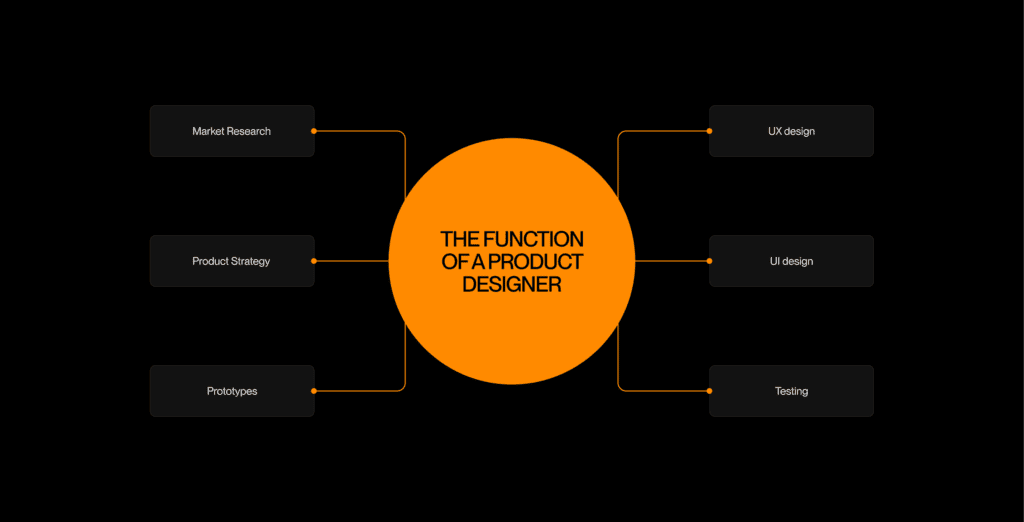
The World of Graphic Designers
The world of graphic design is a realm of visual communication, where creativity and technical skill converge to produce compelling visual content. Graphic designers are professionals who specialize in creating graphics for various media, including print, digital, and advertising. Their work is integral in conveying messages and concepts through visuals, making them a crucial part of any marketing, branding, or communication strategy.
Core Responsibilities of Graphic Designers
Graphic designers are responsible for conceptualizing and creating visual content that communicates specific messages or ideas. This includes designing layouts, selecting colors and fonts, and creating images and graphics. Their work is often characterized by a strong understanding of visual aesthetics and an ability to translate abstract concepts into tangible visual forms.
Situations Calling for a Graphic Designer
Branding and Identity Design
Graphic designers create logos, color palettes, typography, and other visual elements that define a brand’s visual appearance.
Marketing Materials
Whether it’s designing ads for print or digital platforms, creating brochures, or developing graphics for social media campaigns, graphic designers play a key role in crafting the visual aspects of marketing and advertising materials.
Web and Digital Design
In the digital space, graphic designers create the visual elements of websites, apps, and other digital products. Their work ensures that these platforms are not only functional but also visually engaging.
Print Materials
From business cards to posters, and magazines to annual reports, graphic designers are responsible for the visual appeal of various print materials. Their expertise in layout and composition ensures that these materials are both attractive and effective in communication.
Packaging Design
Graphic designers create packaging that is not only functional but also visually appealing. This is crucial in retail, where packaging can significantly influence purchasing decisions.
Illustration and Artwork
Many graphic designers specialize in creating custom illustrations and artwork. These can be used in various contexts, such as book covers, editorial pieces, or standalone artworks.
User Interface Elements
In collaboration with UX/UI designers, graphic designers may also be involved in creating visual elements like icons and buttons for user interfaces.
The world of graphic designers is one of creativity and innovation. Their ability to create visually compelling content makes them an indispensable asset in various situations, from branding and marketing to digital and print media. Their work not only enhances the aesthetic appeal of materials and media but also plays a crucial role in effective communication and brand storytelling.
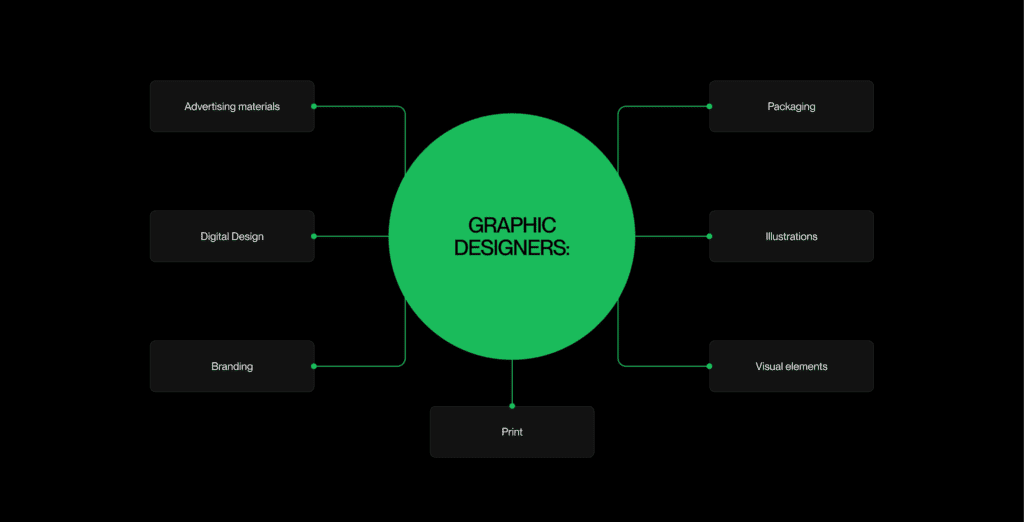
The Developer-Designer Hybrid
In the ever-evolving landscape of digital product development, the emergence of the developer-designer hybrid marks a significant shift in the industry. These professionals embody a unique blend of skills encompassing both design and development, allowing them to understand and contribute to multiple stages of the product creation process. The developer-designer hybrid role is increasingly sought after for its ability to bridge the gap between aesthetic design and technical implementation.
Dual Expertise in Design and Development
The developer-designer hybrid possesses a rare combination of skills that enable them to engage in both the creative aspects of design and the technicalities of development. They are proficient in design tools and principles, understanding user experience and user interface design, and equally skilled in coding and software development. This dual expertise allows them to translate a design vision into a functional digital product seamlessly.
Bridging Communication Gaps
One of the key benefits of having a developer-designer hybrid on a team is their ability to bridge communication gaps. They speak both the language of designers and developers, which enhances collaboration and understanding across these typically distinct departments. This can lead to a more cohesive and streamlined development process, with fewer misunderstandings and misinterpretations.
Enhancing Design Feasibility
Developer-designer hybrids have a deep understanding of the technical feasibility of design concepts. They can foresee potential development challenges in the design phase and adjust designs accordingly. This proactive approach can save time and resources, preventing the need for significant changes during the development phase.
Innovating Solutions
With their comprehensive understanding of both design and development, these professionals are often well-positioned to innovate and problem-solve. They can approach challenges from both a design and technical perspective, leading to creative and effective solutions.
When Do You Need a Developer-Designer Hybrid
- Small Teams or Startups
In environments where resources are limited, having a professional who can handle multiple aspects of a project is invaluable.
- Rapid Prototyping
They are ideal for projects that require rapid prototyping, as they can quickly turn design concepts into workable prototypes.
- Complex Projects Requiring Close Collaboration
In complex projects where the design and functionality are deeply intertwined, their role becomes crucial in ensuring a harmonious development process.
- Innovation-Driven Projects
Their unique skill set is beneficial in projects that seek to push boundaries and require innovative approaches.
Challenges and Considerations
While the developer-designer hybrid brings numerous advantages, there are also challenges to consider. Balancing two demanding roles can be challenging, and there may be situations where specialization in one area is preferable. Moreover, continuous learning and skill development are crucial, given the rapid evolution of both design and development fields.
The developer-designer hybrid represents a new breed of professionals in the digital realm, capable of understanding and contributing to both the aesthetic and functional aspects of digital product development. Their role is instrumental in driving efficiency, fostering innovation, and ensuring that design visions are effectively translated into tangible, functional digital experiences.
Comparing In-House Designers, Freelancers, and Agencies
Businesses have a variety of options when it comes to building their design capabilities. Choosing between in-house designers, freelance designers, and agencies depends on various factors including project scope, budget, and business goals. Understanding the advantages and disadvantages of each option can help in making an informed decision.
Opting for an In-House Design Team
While facing the decision of how to structure business design capabilities, opting for an in-house design team is a strategic choice that can significantly impact the quality, consistency, and alignment of a company’s design output.
Advantages of an Internal Design Team
- Deep Brand Alignment
In-house designers are immersed in the company’s brand and culture, leading to designs that are deeply aligned with the brand ethos. This intimate understanding allows for a consistent brand narrative across all projects.
- Improved Collaboration and Communication
Being part of the company, in-house designers can collaborate seamlessly with other departments. This close proximity enhances communication, leading to more integrated and cohesive project outcomes.
- Long-Term Strategy Alignment
In-house teams are able to align closely with the company’s long-term strategic goals. They are in a better position to understand the evolving needs of the business and can adapt their designs to support these objectives over time.
- Dedicated Focus on Projects
Unlike external designers or agencies that juggle multiple clients, an in-house team is wholly dedicated to the company’s projects, potentially leading to faster turnaround times and a higher level of focus on each project.
Drawbacks of an Internal Design Team
- Resource Intensive
Building and maintaining an in-house design team requires significant investment in terms of salaries, benefits, training, and design resources. For some companies, this can be a substantial financial commitment.
- Limited Skill Diversity
An in-house team might have a narrower range of skills and experiences compared to the broad pool available through external agencies or freelancers. This could limit the diversity and innovation in design output.
- Risk of Creative Insularity
Being exposed only to internal ideas and projects, there’s a risk that the design team might become insular, potentially stifling creativity and innovation.
Optimal Situations for Hiring an Internal Design Team
- Consistent Branding Needs
For companies where brand consistency across all touchpoints is crucial, an in-house team ensures that all design output adheres to brand guidelines.
- Ongoing and Diverse Design Requirements
Businesses with continuous and diverse design needs may find it more efficient to have an in-house team that can adapt quickly to changing requirements.
- Strategic Business Alignment
Companies that see design as a strategic tool to drive business growth may benefit from the close alignment that an in-house team offers.
Mitigating Risks with an In-House Design Team
Reducing risks with an in-house design team involves several key strategies to ensure the team remains innovative and aligned with business goals. Regular training and development are crucial, as investing in ongoing education helps keep the team abreast of the latest design trends and technologies. This fosters innovation and creative growth within the team.
Additionally, collaborating with external designers and engaging in workshops can bring fresh perspectives and prevent creative stagnation. It’s also crucial to establish clear performance metrics and regular feedback loops to ensure the design team’s work aligns with business objectives and continuously improves.
To sum up, opting for an in-house design team can offer numerous benefits in terms of brand alignment, collaboration, and strategic focus. However, it requires careful consideration of the associated costs, skill diversity, and potential risks. Balancing these factors against the specific needs and goals of the company is key to determining whether an in-house design team is the right choice.
Engaging with Freelance Designers
Freelance designers can offer a range of benefits, particularly for specific project needs or to augment in-house capabilities. They can bring fresh perspectives and specialized skills, but it’s important to understand the nuances of working with them to maximize the relationship’s effectiveness.
Benefits of Engaging Freelance Designers
- Access to Specialized Skills
Freelance designers often specialize in specific areas of design, providing access to a broad spectrum of skills that might not be present in-house.
- Cost-Effectiveness
Hiring freelancers can be more cost-effective than full-time employees, especially for short-term projects. You pay for the work needed without the ongoing costs associated with full-time staff.
- Flexibility and Scalability
Freelancers offer flexibility. You can scale up or down your design workforce based on project demands without the long-term commitment of hiring permanent staff.
- Fresh Perspectives
Freelancers bring external perspectives and ideas, which can be invaluable for innovation and creative problem-solving.
- Speed and Efficiency
Freelancers are accustomed to working on a project basis and often can turn around tasks quickly, particularly if they are working across different time zones.
Disadvantages of Engaging Freelance Designers
- Variable Availability and Commitment
Freelancers may work with multiple clients simultaneously, which can impact their availability and commitment to your project.
- Communication and Oversight Challenges
Managing remote freelancers requires effective communication channels and tools. There can be challenges in oversight and ensuring that the work aligns with your overall vision.
- Inconsistency in Style
Without the constant immersion in your brand that an in-house team offers, freelancers might produce work that requires more adjustments to align with your brand standards.
- Onboarding and Contextual Understanding
Freelancers need time to understand the context of your project and brand, which can sometimes slow down the initial stages of a project.
Ideal Times to Engage Freelance Designers
- Specialized Projects
When a project requires specialized skills that your in-house team lacks.
- Workload Fluctuations: During peak periods or when tackling multiple projects simultaneously.
- Fresh Perspectives Needed
When your in-house team is too close to a project and an external, fresh perspective could add value.
- Budget Constraints
When budget limitations make hiring a full-time designer impractical.
Navigating Risks in Hiring Freelance Designers
For successful collaboration with freelance designers, it’s important to provide detailed project briefs, maintain clear and consistent communication, and use digital collaboration tools to streamline project management and coordination.
Building long-term relationships with trusted freelancers is another key strategy. Developing these relationships can provide your projects with reliability and consistency, as familiar freelancers are more likely to understand and align with your business’s vision and needs. Additionally, it is vital to carefully review portfolios and check references to ensure the freelancer’s style and quality align with your specific needs. This step helps in selecting freelancers whose skills and aesthetic sense match the project requirements.
Finally, starting with a small trial project is a wise approach to evaluate the freelancer’s compatibility with your team and project needs. It allows for a practical assessment of the freelancer’s skills and work ethic before committing to larger, more critical projects.
Partnering with Design Agencies
When looking to elevate your business design projects, it can be a strategic move to partner with a design agency. Design agencies bring a collective of professional expertise and resources to the table, making them an attractive option for companies seeking comprehensive design solutions. So, let’s find out the key benefits of choosing a web design company vs a freelance web designer.
Advantages of Collaborating with Design Agencies
- Wide Range of Expertise
Design agencies typically have a team of professionals with diverse skills and specialties. This variety allows them to tackle a wide range of design projects, from branding and graphic design to digital UX/UI design.
- High-Quality, Professional Work
With their extensive experience and professional standards, design agencies are known for delivering high-quality work that meets industry standards.
- Resource Availability
Agencies have the necessary tools, software, and human resources to handle large-scale projects or multiple projects simultaneously.
- Strategic Insight
Beyond just design, many agencies offer strategic insights, helping businesses align their design projects with broader marketing and business strategies.
- Efficient Project Management
With established processes and experienced project managers, agencies can efficiently manage projects, adhering to deadlines and budgets.
Challenges of Working with Design Agencies
- Higher Cost
Generally, agencies are more expensive than hiring freelancers or maintaining an in-house team, reflecting their broader range of services and expertise.
- Potential for Less Direct Control
Working with an agency can sometimes mean less direct control over the minutiae of the project, as agencies typically manage the project internally.
- Risk of Misaligned Visions
There’s a potential risk that the agency’s creative vision may not fully align with the client’s expectations or brand identity.
- Communication Barriers
Effective communication is crucial and can sometimes be challenging, especially if the agency handles multiple clients or operates in a different time zone.
When to Consider a Design Agency Partnership
- Complex, Large-Scale Projects
When a project is too large or complex for an in-house team or freelancer to handle effectively.
- Need for Comprehensive Services
For projects that require a range of services, such as branding, digital design, and marketing strategy, all under one roof.
- Seeking Fresh, Innovative Ideas
When a company is looking to inject fresh, innovative ideas and contemporary design trends into their projects.
Minimizing Pitfalls in Design Agency Partnerships
Establishing clear lines of communication is crucial. Providing detailed briefs helps the agency clearly understand your vision and objectives. Regular check-ins and updates are also important. Scheduling these meetings keeps you informed about the project’s progress and allows for timely adjustments as needed.
Also, it’s essential to carefully review the agency’s portfolio and check references. This ensures their style and quality of work align with your specific needs. Clear negotiation of terms is another vital step, including discussions about timelines, budgets, and the scope of work before starting the project. Lastly, maintain flexibility and openness to new ideas from the agency. By focusing on these areas, you can effectively minimize risks and create a fruitful partnership with a design agency.
Partnering with a design agency can offer significant benefits in terms of expertise, quality, and efficiency, especially for complex projects. However, do not forget to carefully consider the costs, manage communication effectively, and ensure that there is a mutual understanding and alignment of goals to make the most out of the partnership.
Crafting the Ideal Job Description to Hire a UI/UX Designer
Creating an effective job description for a designer is a critical step in attracting the right talent. It’s about striking a balance between providing enough detail to attract qualified candidates and maintaining enough brevity to keep them engaged. A well-crafted job description not only outlines the necessary skills and responsibilities but also reflects the company’s culture and values.
Overview of the Role
Start with a brief overview of the role. This should include a high-level summary of what the job entails and where it fits within the organization. For instance, “Seeking a creative and innovative Graphic Designer to join our dynamic marketing team, responsible for developing visual concepts that communicate impactful messages across various media.”
Key Responsibilities
List the core responsibilities of the role. Be specific about what the designer will be expected to do on a daily basis. This could include:
- Designing visual concepts using graphic design tools.
- Collaborating with the marketing team to develop cohesive designs.
- Interpreting brand guidelines and implementing them in a variety of contexts.
- Creating and delivering design solutions for digital, print, and social media.
- Receiving feedback and making revisions as necessary.
Required Skills and Qualifications
Detail the skills and qualifications necessary for the position. This section should cover both technical skills and soft skills. For example:
- Proficiency in Adobe Creative Suite (Illustrator, Photoshop, InDesign).
- Strong portfolio showcasing a range of design styles and mediums.
- Excellent communication and collaboration skills.
- Ability to work under tight deadlines and manage multiple projects simultaneously.
- A degree in Graphic Design, Visual Arts, or a related field (or equivalent experience).
Desired Experience
Outline any specific experience that would be beneficial for the role. This could relate to years of experience, types of projects worked on, or industries familiar with. For instance, “Preference will be given to candidates with experience in digital marketing design and brand development.”
Company Culture and Benefits
Describe what it’s like to work at your company and what you offer beyond the paycheck. This could include:
- A brief description of the company culture (e.g., collaborative, innovative, fast-paced).
- Overview of benefits (healthcare, retirement plans, professional development opportunities).
- Any unique perks or company traditions (e.g., team retreats, flexible working hours).
Application Process
End with a clear call to action on how to apply and what the application process entails. Include any specific requirements for the application, such as portfolio submission or design exercises.
A well-written job description is an essential tool in attracting the right design talent. It should clearly articulate what the role involves and what qualifications are required, but also showcase what makes your company a unique and attractive place to work. Remember, the goal is to provide a clear picture of both what you expect from candidates and what they can expect from working with you.
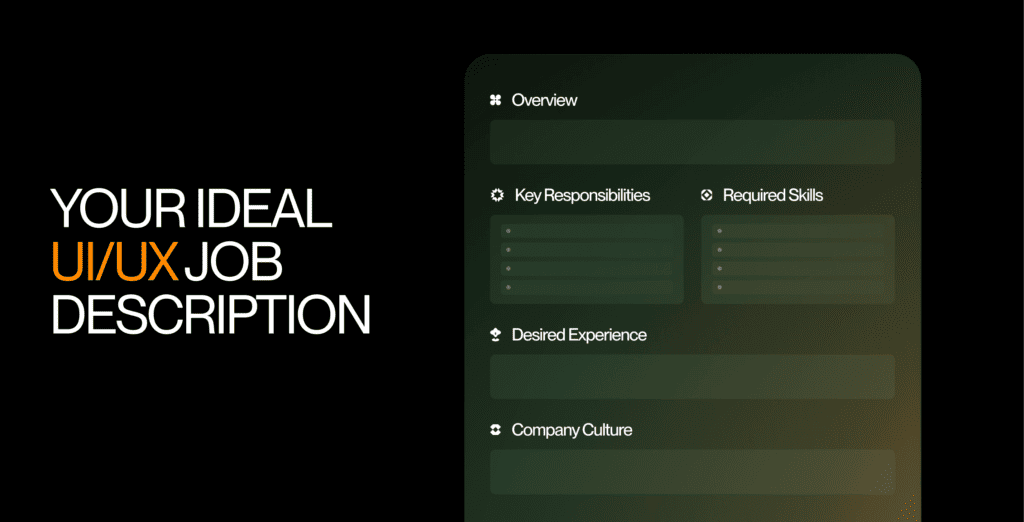
Effective Strategies for Locating Designers and Agencies
While finding the right designers or design agencies for your project be strategic, as the talent you choose can significantly impact the success of your design initiatives. There are multiple avenues to explore, each offering unique benefits in finding the right fit for your specific needs.
Job Boards for Recruiting In-House Designers
- Specialized Design Job Boards: Websites like Dribbble Jobs, Behance Jobs, and AIGA Design Jobs are popular platforms where professional designers look for employment opportunities.
- General Job Portals: Platforms like LinkedIn, Indeed, and Glassdoor also list design positions and can reach a broader audience.
- Local Job Boards: Sometimes, local online job boards can be effective, especially if you’re looking for someone to work in-office or for regional-specific design work.
Proactive Recruitment Strategies for In-House Designers
- Recruitment Agencies: Specialized recruitment agencies can help in finding candidates that match specific skill sets and experience levels.
- University Career Fairs: Attending career fairs at universities with strong design programs can connect you with fresh talent.
- Referral Programs: Implementing employee referral programs can leverage your existing workforce’s network to find qualified designers.
Using Portfolio Sites for Finding the Right Talent
Sites like Behance and Dribbble allow you to browse through portfolios, giving you a sense of a designer’s style and capabilities. Also, many portfolio sites also offer the option to post job listings, attracting professionals who are actively seeking new opportunities.
Leveraging Social Media for In-House Designer Recruitment
Use LinkedIn not just for job postings, but also for searching for candidates directly, looking at their previous work experiences and endorsements. Besides, Instagram and Pinterest are popular among designers for showcasing their work. They can be good places to find talent, especially in more visual design fields.
Networking for Designers
Attending industry events, seminars, and conferences is an excellent way to network and meet designers and agency representatives. Also, participating in design forums and groups can help you connect with a wide range of design professionals.
Utilizing Clutch for Design Agency Options
Clutch.co is a platform where you can find detailed information on design agencies, including client reviews, past project types, and industry focuses. It allows you to compare different agencies side-by-side, helping you make informed decisions based on your specific project requirements.
Discovering Talent on Upwork
Platforms like Upwork allow you to post your project and receive bids from freelancers and agencies worldwide. You can review detailed profiles, portfolios, and client ratings to evaluate potential candidates.
By utilizing a combination of these strategies, you can effectively broaden your search and increase your chances of finding the right designers or agencies that align with your project’s needs and your company’s culture.
Key Questions for Assessing Design Portfolios Effectively
Evaluating design portfolios effectively involves delving into various aspects of a designer’s work to understand their approach, style, and alignment with your needs. Here are some essential considerations to guide your assessment:
Is There a Narrative Present?
Assess the storytelling ability of the designer. A compelling portfolio should not only showcase the final design but also narrate the journey of arriving at that solution. It should provide contextual explanations, revealing the thought process behind design decisions and project objectives.
Do They Have Experience in Your Sector?
Check for industry-relevant designs in the portfolio. If the designer has experience in your sector, it can be beneficial for understanding the specific challenges and needs of your industry. Even if they don’t, consider whether their skills and experiences are adaptable and relevant to your sector.
Feedback from Peers and Industry Experts
Look for feedback or testimonials from peers, colleagues, or industry experts within the portfolio. Recognition from fellow professionals can offer insights into the designer’s reputation and work ethic. Additionally, any industry awards or recognitions can be indicative of the quality and effectiveness of their work.
Personal Resonance with Their Work
Evaluate whether the designer’s work resonates with you personally. A portfolio that connects on an emotional level or aligns with your aesthetic preferences can be a good indicator of compatibility. It’s also crucial to consider if their style and approach could complement and enhance your brand’s identity and values.
Approaches to Problem-Solving and Creativity
Consider how the designer approaches problem-solving and their creativity in finding solutions. Look for examples of innovative solutions and adaptability in their designs. A portfolio that demonstrates the ability to tackle challenges creatively and effectively is a strong indicator of a proficient designer.
Alignment with Business Objectives
Assess if the designer’s work meets business objectives by checking if their projects show how design achieves commercial goals and boosts business outcomes. Look for evidence of their designs impacting key metrics like user engagement, sales, or brand awareness.
Incorporating these considerations into your review process will give you a more comprehensive understanding of each designer’s capabilities and suitability for your project. It goes beyond the visual appeal to include their thought process, problem-solving abilities, and how well their work aligns with your business goals and values.
Essential Interview Questions to Hire a UI/UX Designer
Interviewing designers requires a set of questions that not only assess their technical skills and creativity but also delve into their professional experiences, thought processes, and motivations. Here’s a guide to some essential questions that can help you gain a comprehensive understanding of prospective designers.
Beginning Interviews with Questions that Reveal Candidate Traits
Start the interview with an open-ended question that allows the candidate to talk about themselves. This provides insight into their personality, communication style, and self-perception. It can set the tone for the rest of the interview and offer a glimpse into their professional demeanor.
Outline Their Professional Journey
Asking about their professional journey helps in understanding their career progression. This question allows them to highlight their experiences, roles they’ve played, and the types of projects they’ve worked on. It also provides context for their skills and expertise.
Feedback from Previous Supervisors
Inquire about the feedback they’ve received from previous supervisors or colleagues. This question can reveal how they perceive their strengths and weaknesses and how they have responded to constructive criticism in the past.
Highlighting Their Key Project Roles
Ask them to discuss key projects they’ve worked on and their role in these projects. This will give you an understanding of their hands-on experience, their role within a team, and the types of design challenges they have tackled.
Keeping Up with Design Industry Trends
Understanding how they keep up with design industry trends can indicate their commitment to professional growth and staying relevant in the field. It shows their enthusiasm for the profession and their willingness to adapt to the ever-changing landscape of design.
Tackling Recent Design Challenges
Discussing recent design challenges they’ve faced and how they overcame them can provide insight into their problem-solving skills and creativity. It also gives an idea of how they handle pressure and adapt to unforeseen issues in a project.
Approaches to Market Research
Understanding their approach to market research is crucial, especially for UX/UI designers. This question assesses their ability to gather and use data, understand the target audience, and how they incorporate this understanding into their design process.
Professional Triumphs and Challenges
Inquiring about their professional triumphs and challenges offers a balanced view of their career. It highlights what they consider their successes and how they have dealt with difficulties, providing insight into their resilience and ability to learn from experiences.
What Drives You Professionally
Finally, understanding what motivates them professionally can tell you a lot about their passion for design, their career goals, and whether they align with the ethos and objectives of your organization.
These questions can help paint a comprehensive picture of a prospective designer’s capabilities, work ethic, and fit within your team. Remember, the best interviews are conversational, so allow room for follow-up questions and discussions to naturally flow from these prompts.
Common Pitfalls in the Designer Hiring Process
Hiring a designer involves several nuanced decisions and potential missteps that can hinder finding the right fit for your team and projects. Awareness of these pitfalls is crucial in streamlining the hiring process and ensuring successful recruitment.
The Danger of Combining Multiple Roles
Expecting one designer to handle multiple diverse roles, such as UX, UI, and graphic design, can lead to role overload and affect the quality of work. It’s important to understand the difference between a generalist, who can manage various areas, and a specialist, who excels in a specific domain. The decision should be guided by the nature and requirements of your project.
Avoid Overemphasizing Specific Skills
Focusing excessively on specific technical skills while overlooking other critical aspects like creativity, problem-solving, and communication skills can result in hiring a designer who may not be well-rounded enough. The candidate’s ability to learn and adapt can often be more valuable than expertise in a particular tool or technology.
The Perils of Overvaluing a UX Portfolio
While a strong portfolio is vital, relying solely on it without considering other factors such as team fit, work ethic, and problem-solving abilities can be misleading. The portfolio should be evaluated in the context of the designer’s role in their projects, as a visually appealing portfolio may not always translate into practical, user-centric design solutions.
Unrealistic Expectations for Turnaround Time
Setting unrealistic expectations for quick turnaround times on complex design projects can compromise the quality of the output. Good design takes time, encompassing research, ideation, and execution. It’s essential to understand the time quality design work requires and set realistic deadlines.
The Drawbacks of Dull Job Advertisements
Dull job advertisements can fail to attract high-caliber designers. The job ad should reflect your company’s culture and the exciting opportunities the role offers, with clear and engaging descriptions that provide an accurate picture of what the role entails and what it’s like to work at your company.
Underestimating the Competitive Nature of the UX Market
The UX design market is highly competitive. Offering competitive salaries and benefits is crucial to attract and retain top talent. Additionally, providing opportunities for professional growth can be a significant attraction for talented designers who are looking to advance their skills and career.
Navigating the designer hiring process requires a balanced approach, considering not just the technical skills and portfolio, but also the broader aspects of the role, the work environment, and the dynamics of the market. Avoiding these common pitfalls can lead to more successful hiring outcomes and a better fit for your team and projects.
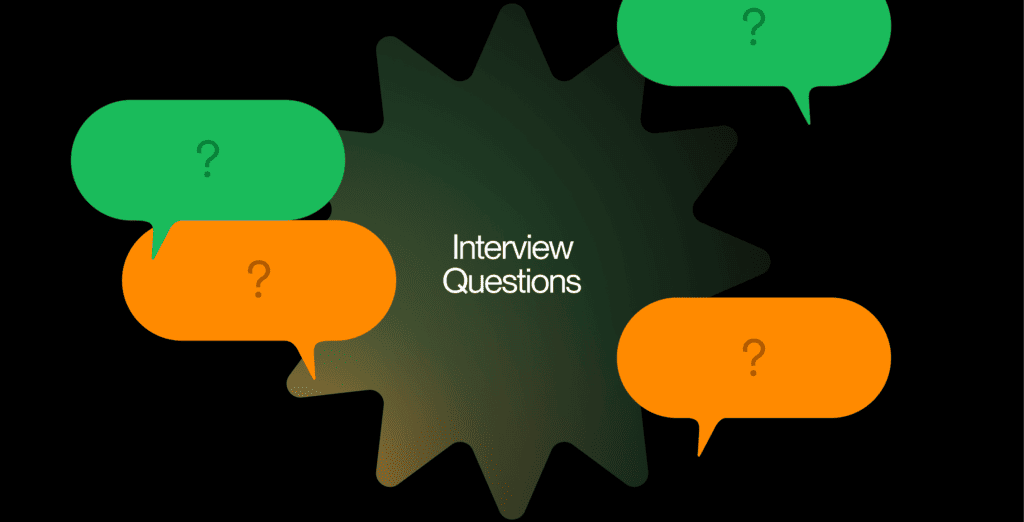
Frequently Asked Questions
01 Why is it important for my business to hire a UI/UX designer?
Hiring a UI/UX designer is crucial for creating user-friendly, engaging, and aesthetically pleasing digital products. They play a key role in enhancing user satisfaction, which can lead to increased engagement, higher retention rates, and ultimately, better business outcomes.
02 Where are the best places to find talented UX designers?
Talented UX designers can be found on professional networking sites like LinkedIn, specialized job boards such as Dribbble and Behance, through recruitment agencies specializing in design roles, and at industry conferences or meetups.
03 What are the typical costs involved in hiring a UX/UI designer?
The costs of hiring a UX/UI designer vary based on factors like experience level, location, and whether they are freelancers or full-time employees. It’s important to consider not only salaries but also potential costs for tools, software, and ongoing training.
04 What strategies should I employ to effectively recruit UX designers?
Effective strategies include creating detailed and engaging job descriptions, utilizing both general and niche job boards, leveraging social media, participating in design forums, and networking at industry events. Additionally, offering attractive working conditions and professional growth opportunities can help attract top talent.
05 Can you explain what design thinking is and why it’s important for a UX/UI designer?
Design thinking is a problem-solving approach that involves empathy for the user, creativity in generating insights and solutions, and rationality in analyzing and fitting solutions to the context. For UX/UI designers, this approach is crucial in developing innovative and user-centric design solutions.
06 What makes Ester Digital Design Agency a preferred choice for UX/UI design needs?
Ester Digital Design Agency stands out for its experienced team of designers who are adept in the latest design trends and technologies. Our agency’s approach focuses on creating bespoke, user-centered design solutions that align closely with our clients’ business goals and brand identity.
On a Final Note
Hiring a UX/UI designer in 2025 demands an understanding of the digital landscape and the designer’s critical role. This guide shows that the process goes beyond evaluating technical and artistic skills, emphasizing the importance of creativity, problem-solving, and technical expertise in finding an exceptional designer.
Choosing between an in-house team, freelancers, or a design agency depends on your project’s needs, company culture, and market dynamics. Every step, from writing engaging job descriptions to conducting interviews, is vital in finding the right design talent.
The design landscape is not just about aesthetics but also about functionality, user experience, and aligning with business objectives. In 2025, as digital interfaces become even more integral to our daily lives, the role of UX/UI designers is set to become more central in creating experiences that are not only visually striking but also intuitive and user-friendly.
Our guide aims to equip you with the insights and tools necessary to navigate this process effectively. Remember, the right designer can transform your project from ordinary to extraordinary, making the meticulous process of hiring not just a necessity, but a strategic investment into the future of your business. So, if you have any questions, do not hesitate to contact our team.
